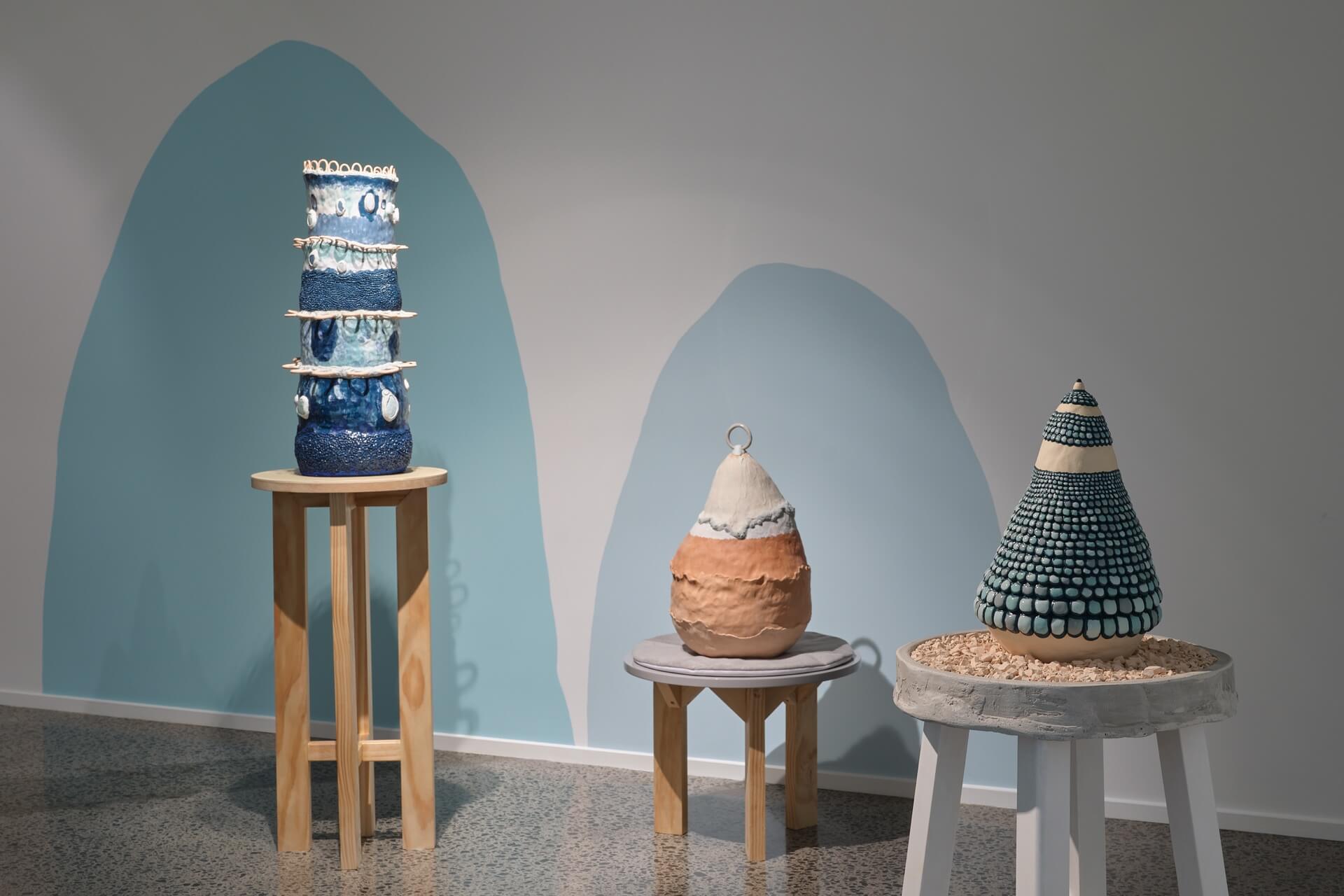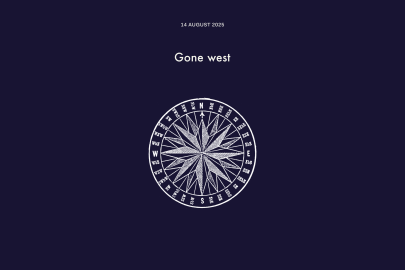Feb 20, 2023 Art
In May 1940, just as the German army was crossing into Luxembourg and Belgium (and just, for that matter, as the Japanese army was launching its gas attacks on Zaoyang), Faber & Faber published A Potter’s Book by Bernard Leach. The book had two main purposes: first, to give detailed instruction on the actual making of pots — it had comprehensive chapters on ‘Clays’, ‘The Making of Clay Shapes’, ‘Decoration’, ‘Pigments and Glazes’, ‘Kilns’ and ‘The Workshop’. Second, to start defining a universal canon or ‘standard’ of artisanal pottery by which the products of the human hand might be distinguished from those of the banal industrialism which had lately dragged the world to war again. (The final illustration in A Potter’s Book was of a kiln log dated “September 1939” — the very month of Britain’s declaration of war against Germany.) In the latter aim, Leach was indebted to the founder of the mingei or ‘people’s art’ movement, the great art critic and philosopher Yanagi Sōetsu, whom he “condensed and paraphrased” in these words:
[After utility,] the next important aspect of the works of people’s art is that they are simple and unassuming. Here the quality of extravagance that is always associated with expensive art objects is wholly absent, and any surplus of decorativeness is objectionable… A thing possessed in some manner of the virtue of poverty has an indescribable beauty. Indeed, Beauty and Humility border upon each other.
It’s tempting to hazard some puns here: for this aesthetic, the pot is made from the earth and its potter should be down to earth. Leach’s book wasn’t just a ceramics primer, but an urgent defence, born from global catastrophe, of basic humanity — a struggle for the very soul of those who walk on earth.
A Potter’s Book proved uniquely influential in Aotearoa New Zealand — an influence compounded by Leach’s visit here in 1962 (and the subsequent visit, three years later, of his longtime friend and fellow potter Hamada Shōji). Aotearoa at the time did not boast much of a ceramics tradition, either Māori or Pākehā. (Bridget Reweti wrote in 2018 that while uku is “deeply embedded in [Māori] cosmology”, as a medium clay sat “outside of customary practice” until “repeated use by Māori artists [resulted] in a subsequent community ownership and knowledge”.) There was scant opportunity for aspiring potters to learn from ceramics classes, for virtually none were available until the early 1950s. A mood of figure-it-out-as-you- go-along prevailed. In her 1978 thesis, Heather Stirling quoted from a truly hair-raising note written by Doreen Blumhardt, who ran some of the first pottery courses at Wellington Teachers’ College:
The Teachers’ College students and I used… vacuum cleaners for forced draught…We knew very little in those days and began by dripping oil into a hubcap and then blowing the air across it from plumbers’ drain pipes squeezed together at one end to make a narrow slit. It worked very well, though with the open drums of oil standing around it was highly dangerous. It was an up-draught kiln where everything was too hot at the bottom and many shelves collapsed, pots were stuck together, and so on. With no proper flashing around the brick chimney we finally burnt a hole in the roof before the Education Board clamped down on the whole operation.
Perhaps Helen Mason (who helped Blumhardt build this death-trap) had such escapades in mind when she reflected, at the outset of her 2005 Scrapbook, “we found Bernard Leach’s A Potter’s Book in the library and a whole new world began to open up”.
The book became “a bible” for New Zealand potters. As crafter and curator Finn McCahon-Jones put it in a 2019 piece for Tāmaki Paenga Hira, “Armed with Leach’s A Potter’s Book, … many New Zealanders took up pottery, embracing the Japanese aesthetic with gusto… Trickling glazes half dipped over a pot became an exemplar of the wabi sabi look”. Indeed, ‘the beauty of the imperfect’ (as Leach, adapting Yanagi, defined wabi sabi in The Unknown Craftsman) was adopted so thoroughly here that, when a selection of the nation’s pots (including work by Peter Stichbury, Len Castle and Mirek Smíšek, all of whom had actually studied under Leach at St Ives in Cornwall) was exhibited at Expo ’70 in Osaka, the attendees had one “constant question”, as Hugh Macdonald’s documentary This is Expo records: “Are these works Japanese?”
But the authority of A Potter’s Book has not gone unchallenged. In a 1997 article for the Journal of Design History, the British author and master potter Edmund de Waal took issue with Leach’s overt Orientalism, calling into question “the mythic story of his knowledge and insight into Japan, of his apprenticeship into the Kenzan school and his ‘natural’ absorption into Japanese life”. Three years later, the American potter John Britt would unleash the following tirade in Critical Ceramics:
All this grandiose rhetoric about the humble potter ‘coupling beauty with the nobility of poverty’ was fine for everyone else but not for Bernard Leach. In reality, he was a wealthy, globe-trotting aristocrat… The irreconcilable contradiction of Bernard Leach is that on one hand he rejects Western industrial capitalism while at the same time he desperately needs [it] to survive. Between his elite customers, financing by wealthy industrialists… and the education of [Leach’s son] at the ‘hands of the industrial devils’ at Stoke-on-Trent, industrial capitalism is what kept him alive.
By these assessments, Leach’s ‘humility’ was simply another posture: a studied affectation as assuming and extravagant as even the gaudiest works of mass production. A humblebrag, in other words. Little wonder, perhaps, that even at Expo ’70, makers from Aotearoa were already departing from Leach’s teachings: Pat Perrin, for example, was promoted as a potter “barely influenced by the Japanese trend”.
This, mind, is a bit unfair to Leach. To accuse him of whitewashing Eastern tradition isn’t entirely appropriate when mingei, as Crafting Aotearoa recently put it, “was itself a Japanese interpretation of the British Arts and Crafts movement”. Leach’s longest-standing debts were not to Yanagi but to John Ruskin and William Morris. What’s more, it doesn’t really matter whether Leach arrived at absolute humility or not; the point is that he sought it. As Okakura Kakuzō wrote in The Book of Tea, “The Tao is in the Passage rather than the Path”; or as Emmanuel Cooper put it in his 2003 biography of Leach, “For potters, collectors and admirers it is the integrity of Leach’s approach and his search for vitality — a major driving force in his life and work — that makes his work of enduring interest”.
Today, for the majority of contemporary ceramicists in Aotearoa, mingei is just one of a myriad of international reference points, including the unapologetically sculptural work of the Sōdeisha or Crawling through Mud Association (established in 1948), which outright rejected the unassuming utility championed by Yanagi. And while mingei’s influence is therefore hard to spot these days, it’s visible, I think, in the persistence of wabi sabi and the widespread taste for ‘imperfect’ or ‘lumpy’ ceramics — a taste sustained, in turn, by the persistence of what, in a 2020 feature for The Cut, Molly Fischer described as “the millennial aesthetic”:
You’ve entered a white room… Circles of faded terra-cotta and pale yellow; mint-green and mustard confetti; white, with black half-circles and two little dots — aha. Those are boobs… Upon the terrazzo nougat of the coffee table… a succulent in a lumpy ceramic pot, a scented candle with a matte-pink label…
Though, as Fischer explains, “the first soft, pink harbingers” appeared as long ago as 2004, “it is hard to imagine how the millennial aesthetic will age”. Perhaps for this reason, its ceramics have become ubiquitous — even here. The homeware collections of Wundaire in Greytown, for example, like those of JS Ceramics in Tauranga or Kami & Kindred in Whakatū, are all fastidiously lumpy, meticulously imperfect, and seldom fail to feature something glazed, either completely or in part, with pale yellow, mustard or matte pink. And then there are the boob mugs — by Payge Ceramics in Papamoa, Artemis Ceramics in Tāmaki Makaurau and Black Shed Pottery in Waihī (to name but a few). Nice Assets in Pōneke ran a boob mug workshop in April this year. Mud+Woman ran two in November and December. Doubtless, wabi sabi has been an influence on this pottery (as many of its makers attest), though it must be said that it would scarcely be recognisable to Yanagi, for whom “the sukisha [tea masters] were masters of enjoying what was lacking”. Few pots lack less than those with added flaws or stick-on breasts.
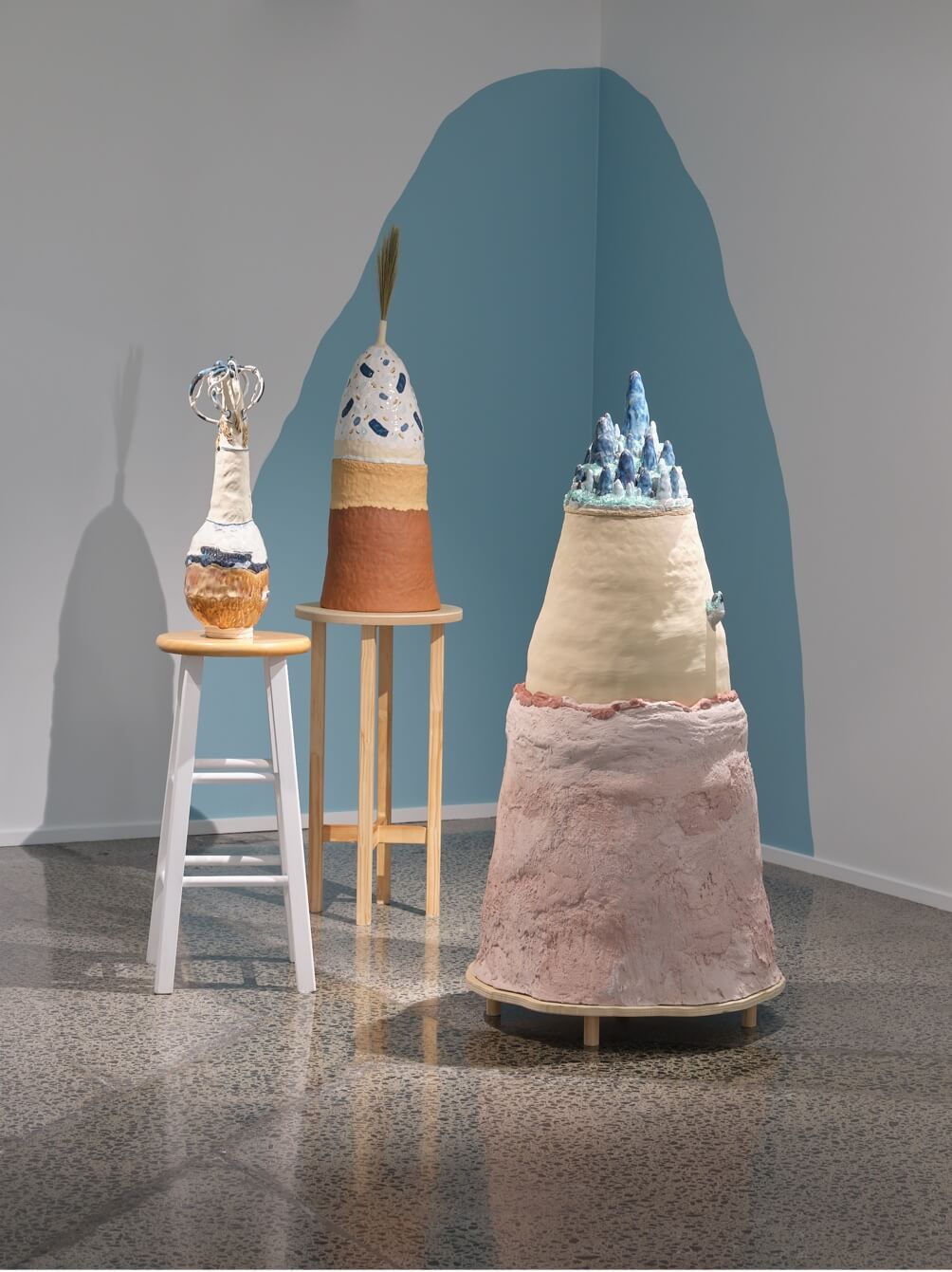
Becky Richards, Blue Bungle Kingpin, 2021–22; Party Egg, 2020–22; and Cosmic Pinecone, 2020–22. Courtesy of Objectspace
A more complex engagement with the millennial aesthetic was offered by Becky Richards’ recent show Wonderlump (which ran at Objectspace from September to November). In the white room of the Chartwell Gallery sat nine wonderfully lumpy ceramics. On nearly all of them, some patch of faded terra-cotta had been left unglazed. True, there was no mint-green per se, but its close accomplice, mouthwash blue, featured on everything but Party Egg. Mustard bands encircled two of the works, one of which was even called Confetti Sprout. Turtle Hill and Party Egg, it must be said, did look a bit like boobs (albeit, with nipple rings), while Cosmic Pinecone — with its rows on rows of lumps — bore more than a passing resemblance to Diana of Ephesus (or, at least, brought the refrain of ‘Fergalicious’ to mind). Resting on a bed of matte-pink pebbles, it looked across at Crystal Mountain, whose foot was of the same matte pink. I thought of Fischer’s words: “Everything’s fun, but not too much fun”. Or, as the exhibition text noted, there was “playful reference” but a “feeling of material strangeness”. Either way, mingei’s ‘virtue of poverty’ was itself ‘wholly absent’. There was, instead, a wealth of imperfection.
But Wonderlump also possessed something which the millennial aesthetic really does lack: a sense of the grotesque. Richards’ ceramics aren’t just lumpy, they’re outlandishly misshapen, fantastically proportioned. Visitors to Wonderlump were encouraged to view each work as “a distinct personality”, but the personalities on display were the monstrous caricatures of gargoyles and hunky punks — perhaps, even, of Lanier Meaders’ famous face-jugs. The foot of Crystal Mountain was nearly six times taller than its mountain. Mad Stack appeared to be modelled on a regular bottle vase, but was warped beyond all recognisability. Blue Bungle Kingpin had four distinct tiers and tottered skyward like a puffed-up wedding cake, forever about to topple beneath the weight of its own aspirations. True, the fun was moderate, or ‘not too much’, but it was also at constant risk of falling into absurdity.
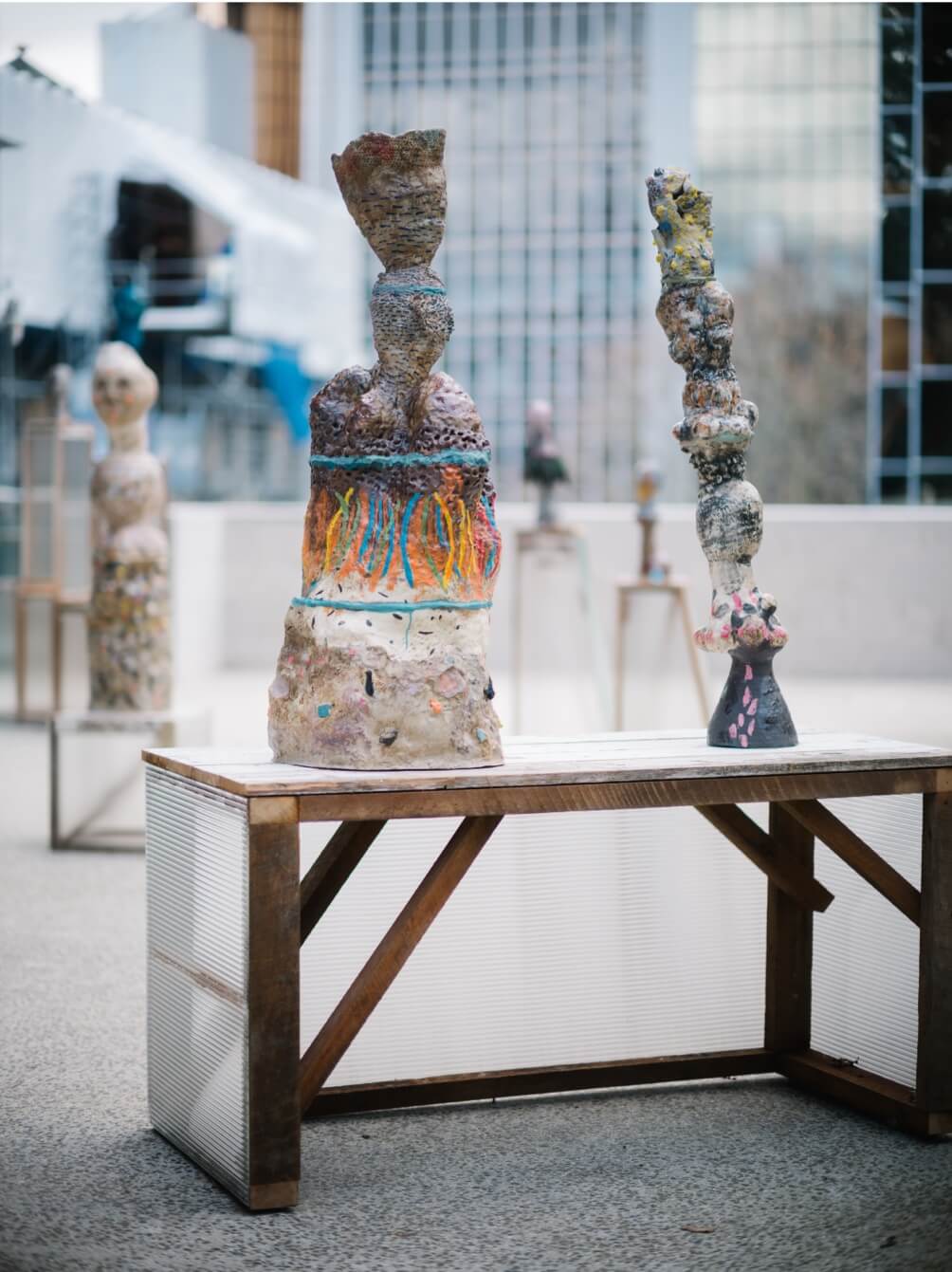
Suji Park, Meonji Soojibga | Dust Collector (installation view), Auckland Art Gallery Toi o Tāmaki 2022. Photograph by David St George.
In this respect, Richards’ work is indicative of a broader trend among contemporary ceramicists in Aotearoa today: a tendency toward radical deformity. In Meonji Soojibga / Dust Collector, for example (at Auckland Art Gallery Toi o Tāmaki until 2 April 2023), Suji Park’s headless creatures are “pushed and pulled, distorted, pressed and cracked”. In Absence Observes (an online show hosted by Quadrant Gallery in 2020), Blue Black exhibited a series of ceramic chairs — only they were twisted, skewed and swollen. Likewise, in Against the Tide (which ran at The
Dowse Art Museum in 2021 and then at Te Uru in winter 2022), the ships of the late Robert Rapson were called “wonderfully wonky yet uncannily accurate”. I would amend this to “wonderfully wonky because uncannily accurate”: Rapson’s work is defined by an obsession with detail that is achieved only at the expense of overall form; it fails, spectacularly, to see the forest for its compulsive infatuation with the trees.
It was the same type of (spectacular) failure that ensured the success of the handful of ceramics included in The Future of Dirt, a show by Hana Pera Aoake (Ngāti Mahuta, Ngāti Raukawa, Tainui/Waikato), Wesley John Fourie and Taarn Scott which ran at RM Gallery in June 2022. These pieces were characterised by both their intricate detail and their severe distortions. In form they were modelled on pitcher jugs, partition bowls and flower vases, but warped beyond all recognisability. Marks on the surface seemed to imitate the tiny ripples of windswept water (perhaps like the fluttering of wiri in kapa haka), or else depicted, in ornate incisions, an array of trees and shrubs, bubbles and spume, rocks and stones, scoria and sand. The works of these diverse makers appeared to participate in a particular style: on the one hand, all concede to the obstinate, even oppressive, persistence of inherited forms; on the other, all are hellbent on defacing those forms. They are, as sociologist and theorist of style Dick Hebdige once said of prison-wall graffiti, “an expression both of impotence and a kind of power — the power to disfigure”.
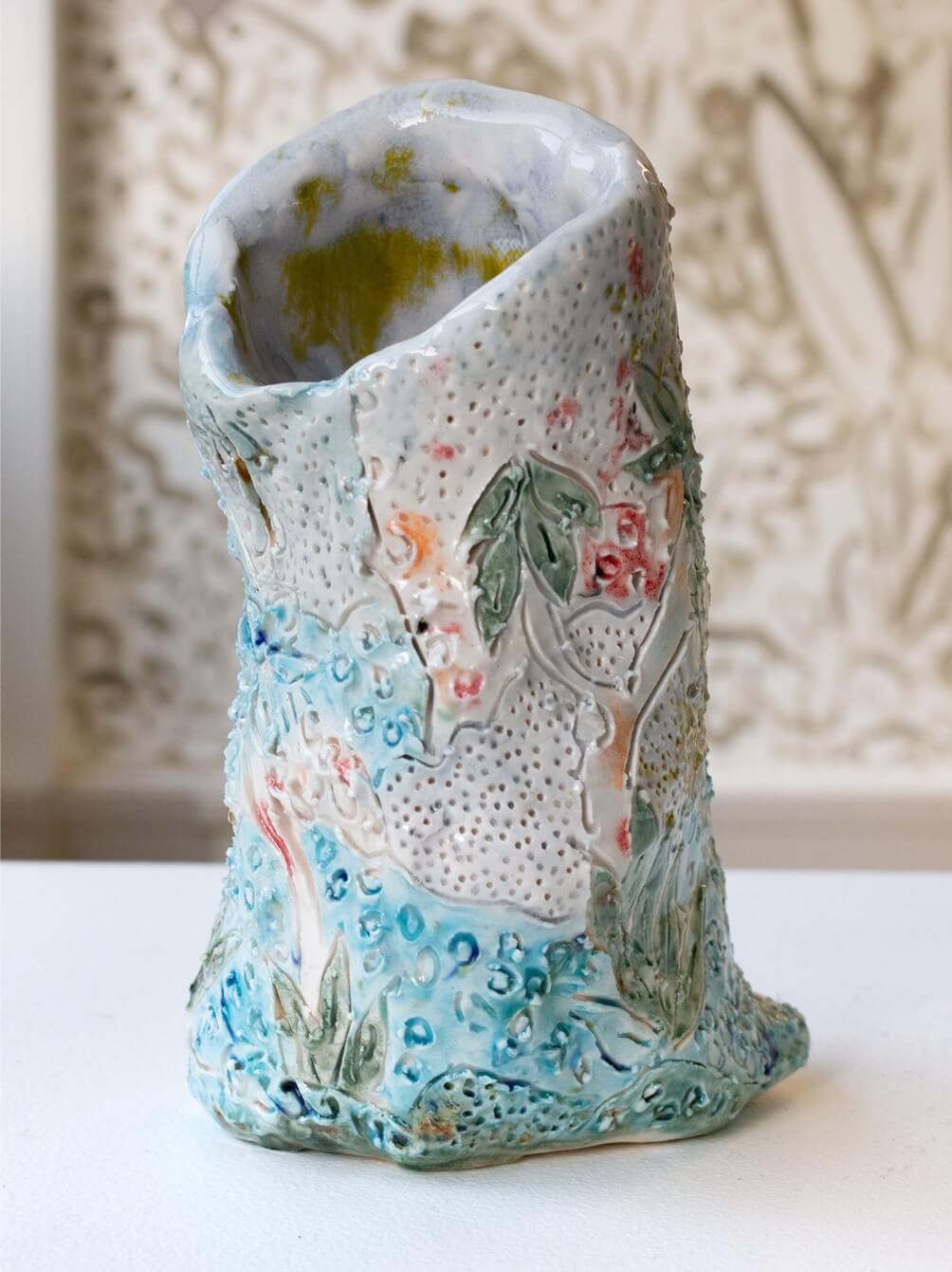
Wesley John Fourie (foreground and background). Installation view from The Future of Dirt exhibition with Wesley John Fourie, Taarn Scott and Hana Pera Aoake. Courtesy of RM gallery and the artists. Image by Lindsey de Roos.
The other thing that Wonderlump possessed was what the brochure called “an excess of embellishment”. Not only were the works themselves ornamental (you couldn’t, say, store anything in Mad Stack), most were adorned with a surplus of further ornament: lavished with loops and hoops, loaded with lace-like borders and perforations. Hot New Hair-do was topped with a knot of handles, but they were warped, conjoined and comically unusable. Again, Richards was not alone here. One of Park’s ‘creatures’ is topped with a near-identical knot of handles. Pieces in Rebecca Steedman’s Life Underwater (just closed at Helter Skelter) were ornately festooned with seaweed, tentacles, leaves, scallop shells, limpets, hoops, spikes, and protruding faces. The plates and bowls of Mt Maunganui-based maker Laurie Steer are densely decorated with spiders, serpents, skulls and even dying dolphins (and recall the antics of the Renaissance ceramicist Bernard Palissy, whose work also delights in laying an abundance of the abject precisely where you eat). In Antireality Perversion Void — a touring show curated by Jess Johnson, on at City Gallery Wellington until 23 April 2023 — Steer’s work is displayed alongside that of Ōhinehou-based maker Nichola Shanley, the majority of whose ceramics (including those which were exhibited at Pōneke’s AVID Gallery in 2020) are comprised entirely of ornament. If, for mingei, “any surplus of decorativeness is objectionable”, then these makers appear to represent that movement’s antithesis.
The case for decoration is a persuasive one. As it’s put by a character in Shola von Reinhold’s 2020 novel Lote:
We are, you know, fundamentally ornamental creatures… even the Greeks must at one point have realised the importance of ornament. They called the universe “kosmos”, meaning decoration, surface, ornament: something cosmetic. Like make-up. Like lipstick! Like rouge. The cosmos is fundamentally blusher… if you ever need evidence of someone’s brutishness, it’s deeming ornament inessential!
Consolidating the views of the mingei movement, the ceramics scholar and curator Oliver Watson insisted that the “Ethical pot… must be functional, simple, and have no excess ornamentation”. The sense we get from many of today’s ceramicists (as from Lote), however, is that this ‘ethics’ is simply provincial. The ‘cosmetics’ of Richards’ Cosmic Pinecone were never mere accessories to structure; they were exactly what made the piece so cosmic — exactly what enabled it to reflect what von Reinhold calls “the universe as decoration”.
Despite its rejection of mingei’s ‘humility’, can this work still embody what Yanagi called “the beauty of everyday things”? For me, the thrill of the ceramics being made in Aotearoa today lies in the frequent gestures they make towards the mundane-as-decoration. In Ōtepoti, Madeleine Child’s subjects include frying pans and candied popcorn. At Eleventeen Ceramics in Tāmaki Makaurau, Denise Porter-Howland makes ceramic pizza slices, false teeth, cigarette butts, banana skins, apple cores, sneakers and stilettos. Park’s work, we are told, incorporates “the abandoned materials and things she has collected from her surrounds”. And Wonderlump repurposed all manner of detritus. Turtle Hill was flecked with those cloudy rose-quartz chips that usually sit on the floors of fish tanks; in the Chartwell Gallery, however, they looked enchanted. The ‘crystals’ of Crystal Mountain were bits of windscreen shatter-glass — collected, it turns out, from the carpark of the Countdown in Three Kings. Here they seemed ethereal and otherworldly. And poking out of Mad Stack and Confetti Sprout were long stems of dried grass. Richards provided their origin story on her Instagram page:
Since moving home in 2015 I’ve searched and searched for these little brooms, could never spot them, then finally found some at ‘U-PLUS’ in Mt Eden, around the corner from our flat (Shout out to U-PLUS!)
Both Leach and Yanagi lived in awe of William Blake, but the wonder of Wonderlump was that it showed us nothing as lofty as “a world in a grain of sand” or whatever, but the ordinary adornments of the universe. The cosmetics of the cosmos, right here in U-PLUS. When our everyday things are themselves the products of a banal industrialism, the people’s art still looks for beauty in what is close to hand. Today’s grounded potter works with what is gathered from, or used to sweep, the ground.
–

